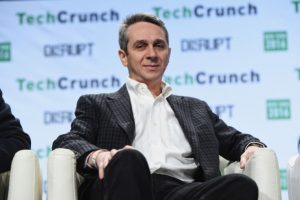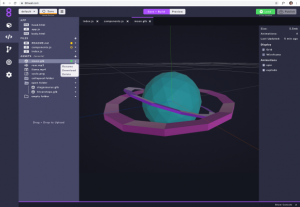Easterners and people who’ve never been east of La Cienega Boulevard sometimes say the 238-year-old city of Los Angeles doesn’t have history. That’s dopey for a lot of reasons, but it’s a tempting accusation in part because of the way fires, floods, earthquakes, and uprisings have forced the city to remake itself again and again. The Los Angeles basin was a seasonal wetland beset by tectonic forces, annually cleansed by hot wind and fire and overtopped by a smoggy inversion layer long before the Spaniards moved in on the Tongva. It’s burning again today, as is local tradition. No wonder novelists and moviemakers always blow up the town in Act Three.
Maybe one reason people gloss all that history is that LA talks so much about its own future. Here we are in November 2019, and real time has finally caught up with the timeline of one of the city’s ur-texts, the movie Blade Runner, released in 1982 but set this month and this year. Angelenos have been waiting for this. It’s like how freeway signs tell you your exit is coming way, way in advance.
I’m as suspicious as you are, I’m sure, of trying to twist science into a metaphor, but I’m going to do it anyway. Relativity says that space and time are related to the speed of light, and gravity is a side effect of mass. So massive objects like stars create gravity by denting space-time, so much so they’ll bend light right around themselves. Set that star spinning, and its local time frame will stick a little bit, like a wake. That’s called rotational frame-dragging—a massive object carries its past and future with it while it spins forward. My point is Los Angeles drags its own frame. The reason people say it doesn’t have any history is that its timeline gets pulled along, not entirely consensually, as the city bumbles into the future. The future is always present.
And here we are—in a present that happens in a future promised by the past. Have a look around, time travelers. Blade Runner got a lot right; it got a lot wrong. Maybe don’t ask a 1980s sci-fi movie that bumbled into its own brilliance for specific predictions and retrodictions. It wasn’t even really trying to be about the future, was it? The look was Shinjuku and the feel was Mike Davis’ City of Quartz, a megalopolis dominated by Haves tricking Have-Nots into shooting each other. Harrison Ford’s Rick Deckard was one in a long line of LA shamuses tripped up by wealth and beauty, from Marlowe and Gittes to Rawlins and Bosch. Forget it, Deck—it’s Chinatown.
You want an accounting, not a whodunnit but a what-got-dun? Blade Runner got the computerized parking meters right, and the talking streetlights. (“Cross now … cross now … don’t walk … don’t walk.”) Robot Metrokabs? So close. Streetside newsstands carrying an array of glossy magazines? Yeah, about that. Face-recognizing polygraphs? Check your phone’s forward-facing camera. We enhance digital photographs, and we have voice-controlled gadgets in our kitchens. Billionaires promise a life off-world of excitement and adventure, but we don’t even have billboard dirigibles, much less reliable rockets. Artificial intelligences indeed do our bidding (and sometimes rebel), but none of them look like Rutger Hauer (unless—oh, sorry, that’s just a deepfake). It doesn’t take torrential rain to wash away their memories like tears, or even several shots from a Steyr Pflager Katsumata Series-D blaster. You just forget to pay the AWS bill and poof. This isn’t called execution. It’s called retirement.
What did Blade Runner get most right about November 2019? Life in the big city. Downtown Los Angeles actually has bustling nightlife today, which in 1982 seemed preposterous. And ubiquitous digital devices and social media give us means and motive to externalize our memories to photographs in exchange for likes and influence, ensuring that we can never be certain if we’ve taken a picture of a memory or are just remembering a picture.
An excess of rain, though? Welp. Took a wrong turn there. In the real now, the Santa Ana winds have the tang of a barbecue-flavored potato chip and the air is as dry as a noir private detective’s movie narration. Still, the substance of the prediction holds. It’s the one everyone always maps onto LA: disaster. Blade Runner’s implied ecological catastrophe is nuclear and chemical, industrial pollution and bombs. That’s what we all worried about in the 1980s, and we were wicked wrong. No wonder the sequel Blade Runner 2049 retroactively refocused that prediction onto a climate apocalypse, with its desertified Southwest and seawalled coastline. That’s frame-drag at work, looping the present back into the past so the future will make sense.
Let’s say you buy the idea that Los Angeles’ future is interesting because it is all our futures. It’s not perhaps westernmost on maps, but if that’s the direction of frontiers, it is the most westest of Western towns. What happens there happens first. So, OK: In that headspace, you might want to contrast two pieces of unintentional advice.
On one hand you have Roy Batty, Hauer’s killer replicant, who just wants more life. His memories make him worth saving, he’s arguing, even though a police detective, avatar of the city, is trying to snuff him out—to retire him. Batty was, ironically, a humanist, insisting that the memories of one person were a hologram for the universe. Nice … but maybe a little backward-looking. Los Angeles has issues with history.
On the other side, you have Gaff, Edward James Olmos’ dapper shadow, who lets Deckard and Rachel flee to safety. “It’s too bad she won’t live,” he says. “But then again, who does?” None of us really has a future. That’s what makes us all human, even robots who come to Los Angeles in hopes of reconstruction. Sure.
Gaff’s conclusion—live for the now, bail out, run away—is terrible advice, of course. Gaff was a nihilist, confronting insane robots and lightning storms with a big old “whatever.” Maybe you can afford the $200,000 ticket on Rocketship Billionaire.
Yeah, it’s too bad we won’t live, but out here in the real world we actually made it to November of 2019, and it’s our job to make sure the children of Los Angeles and every other misbegotten bumbling city get to the next milestone, frames dragged at the speed of light toward something better, if we build it.
I’ve straw-manned a false dichotomy here. This is Los Angeles, so the ending is more complicated. You know who I think gets it right? J.F. Sebastian, the genius genetic engineer who designs replicants. Sebastian gets it. He’s too sickly to play the billionaires’ off-world games, so he lives downtown. The world doesn’t give an Angeleno an even break. So he makes his own, a happy, kinky, multicolored life in a golden land of opportunity and adventure—at home, in Los Angeles, California, Earth, where it always has been, and always will be, almost exactly but not quite November 2019.
More Great WIRED Stories
- The shady cryptocurrency boom on the post-Soviet frontier
- A new Crispr technique could fix almost all genetic diseases
- The quest to get photos of the USSR’s first space shuttle
- The death of cars was greatly exaggerated
- Why one secure platform passed on two-factor authentication
- 👁 Prepare for the deepfake era of video; plus, check out the latest news on AI
- ✨ Optimize your home life with our Gear team’s best picks, from robot vacuums to affordable mattresses to smart speakers.


